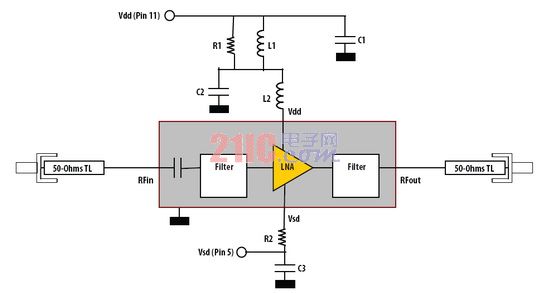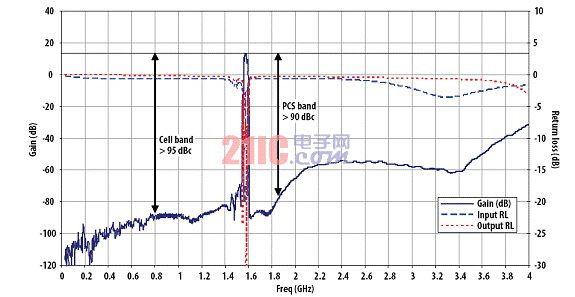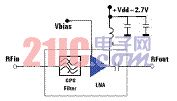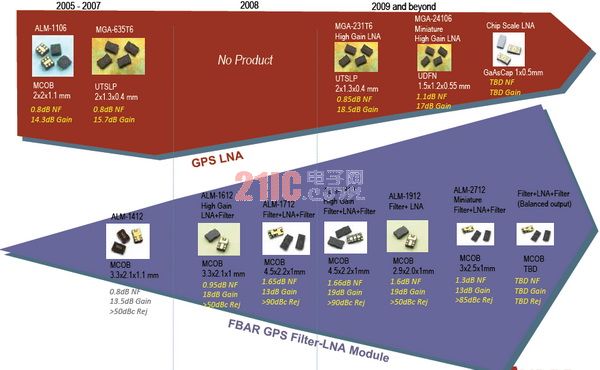As early as the September 11th terrorist incident in 2001, the United States forcibly required the mobile phone to have a GPS positioning function based on security considerations to determine the real-time location of the mobile phone. In recent years, with the rapid development of China's infrastructure construction, road construction is changing with each passing day; people's work and life rhythm is accelerating, GPS navigation and positioning system is becoming more and more important, and demand is increasing. Recently, it was reported that Nokia has announced a new version of its Ovi map for its smartphones, which will include high-end walking and driving navigation. This move is seen as a major change in the GPS mobile navigation industry and GPS navigation related industries. With the general improvement of mobile phone performance and the unique problem of mobile phone GPS receiver, GPS function is no longer the exclusive configuration of high-end mobile phones, and is developing to the standard of ordinary mobile phones.
This article refers to the address: http://
Introduction to GPS function GPS is called Global Positioning System. It is distributed by 24 satellites in 6 orbits of different heights. It is divided into navigation and positioning according to functions. It is divided into military and civilian applications according to application. The military frequency is 1.227GHz, which is monopolized by the US military. Its use is mainly used for military guidance and military purposes such as weapon guidance, investigation, and high precision. The civil frequency is 1.575GHz, which is freely used worldwide. Its use is mainly used in Hainan Airlines, natural sciences, and more widely, we are familiar with car navigation. Only when a valid signal of 3 stars is received at the same time can the position be determined.
The GPS signal is weak and the receiver sensitivity is usually around -136dBm.
The challenge of mobile phone GPS The characteristics of mobile phone application: small size, low power consumption, good productivity, low cost, short design time and fast product. The GPS function based on the mobile phone platform has higher requirements and is more challenging than the independent GPS receiver. The main considerations are as follows: Electronic environment, power consumption, volume, price, design convenience and performance indicators are easy to implement. Sex.
Common single-chip GPS receivers use CMOS technology and do not achieve high receiver sensitivity. Compared with the car driving on a relatively wide space, the handheld GPS is more flexible than the car's movement, the position signal will be weaker, and multipath reception is more common. It is more demanding to receive, and it is necessary to add filters and low noise at the receiving front end.
The GPS design on the phone considers the electronic environment to be even worse. The GPS receiver and the mobile phone are placed on the same board. For the 1.575GHz GPS signal, the out-of-band signals are: 900MHz, 1800MHz GSM power amplifier; 1800-1900MHz PCS power amplifier; 2.4GHz WLAN, Bluetooth; and 2.5-2.7 GHz WiMAX. Although these signals do not exist at the same time, each is very strong and has a significant impact on GPS reception performance. Experiments show that the -15dBm out-of-band signal will cause the GPS low noise gain to drop by 1dB. Therefore, when choosing a mobile phone GPS low noise amplifier, not only its own noise figure and gain, but also its out-of-band attenuation index, this should be paid attention to. The ability to capture the GPS receiver, track performance and positioning accuracy, and even whether it works properly is critical.
CDMA, WCDMA mobile phone transceivers are duplexed, and the power amplifier's transmit signal and noise will interfere or even block the GPS signal. Therefore, the GPS receiver must be equipped with an LNA and a high performance filter. The LNA increases its receiving sensitivity while the filter enhances the out-of-band attenuation. Another benefit to design routing is that the LNA can be placed close to the antenna end, reducing the need for GPS receiver module position and improving the GPS receiver noise figure by about 1.5 dB. However, since the GSM mobile phone transceiver is time-division work, the out-of-band attenuation requirement of the GPS signal is relatively not very demanding, and the high-performance filter can be omitted, and the GPS receiving front end is realized by simply filtering and adding a low-noise scheme. To save costs.
For different systems and platforms, there are currently several options for mobile phone GPS receiving front ends:
- On the GMS system, select the active antenna, that is, the low noise amplifier and the GPS receiving antenna are integrated;
-- On CDMA, WCDMA systems, there are discrete low-noise add-drop filters, and the materials and performance used in the two devices have options. The above solution is a challenge for design time, design difficulty, performance indicators, PCB size and component count.
As the market demand changes, the GPS receiver front end with integrated filters and low noise amplifiers is widely used, and the benefits are obvious. As with discrete devices, there are different combinations: LNA+ ceramic filters or LNA+SAW (surface acoustic wave filters). In the market, the performance is optimized with the CaAs E-pHEMT+FBAR scheme: low noise, better linearity, and better out-of-band attenuation.
Avago is committed to GPS receiver front-end modules
Combining the industry-leading CaAs E-pHEMT process and FBAR filter technology, Avago offers GPS RF front-end modules that provide a variety of options for GPS plus low-noise front-ends, as shown in Figures 1, 3, 4, and 5, There are: Filter + LNA + Filter; Filter + LNA; LNA + Filter; or pure LNA, Avago fully considers its application environment when planning and designing these products, and is the first choice for mobile phone GPS receiver design.
CaAs E-pHEMT Low Noise Discharge Features Compared to other materials and processes, CaAs E-pHEMT has the following advantages: low noise figure, preferred for low noise discharge; high linearity at low operating voltage, improved receiver dynamic range, Conducive to the mixing and demodulation of subsequent signals; the high gain is the value of the amplifier. Therefore, CaAs E-pHEMT is the perfect combination of noise figure, linear and gain three low noise amplifiers, which is difficult to achieve with low noise of Si materials.
Characteristics of FBAR filter Ceramic filter can withstand large power, good temperature characteristics, but large volume, Q value is not as good as FBAR;
The SAW filter has low power, poor temperature, low Q, and low cost. There are also applications on some phones that are not very demanding;
FBAR filter: good performance, small size and easy integration. With the duplexer on the mobile phone, the application of the filter to replace the SAW is more and more, and its cost performance has been recognized by everyone.
ALM-1712 GPS Receiver Front End Example Figure 1 shows Avago's ALM-1712 product, which consists of two FBAR filters and an LNA. The total noise figure of the three stages is 1.65 dB. The RF side ESD >3KV eliminates the need for additional ESD protection devices, saving space and cost. Operating as low as 1V, the shutdown feature meets the low power requirements of mobile applications, and variable bias provides an ideal balance across performance metrics. The package is 4.5 (L) x 2.2 (W) x 1 (H) mm3, and the peripheral device has only 8 resistors, capacitors and inductors. 
Figure 1: Avago ALM-1712 product Figure 2 below shows a gain of 12.8 dB at 1.575 GHz with Vdd = 2.7V and Idd = 8.0 mA bias; linear IIP3 = +7 dBm, IP1dB = +3 dBm, right The 900MHz out-of-band attenuation is up to 95dBc, and the 1800MHz out-of-band attenuation is as high as 90dBc, which effectively guarantees that the GPS receiver can perform well in the harsh electronic environment. The ALM-1712 satisfies the special requirements of mobile phone GPS: electronic environment, power consumption, volume and cost requirements, design time and performance indicators, which are self-evident for mobile phone manufacturers.

figure 2

image 3

Figure 4

Figure 5
The following are the main indicators of the two models commonly used in the market. In the case of low noise amplifiers using the CaAs E-pHEMT process, it is easy to see that the FBAR filter suppresses the PCS band by 21dB (63 vs. 42).
Product ALM-1412 RFxxxx
Structure CaAs E-pHEMT + FBAR CaAs E-pHEMT + SAW
Gain (dB) 13.50 13.50
NF(dB) 0.82 0.85
IP1dB(dBm) 2.70 -2.00
IIP3 (dBm) 7.00 9.00
Cell Band Rejection (dBc) 54.00 54.00
PCS Band Rejection (dBc) 63.00 42.00
Figure 1 is a development roadmap for Avago's GPS receiver front-end product line. It is not difficult to find that Avago pays great attention to the GPS receiver front-end module and low-noise market. With the wide application of different functional performance products on GPS receivers, Avago will continue to introduce more products that meet the market. For details, please contact Aavago Asia Pacific. Shiqiang Telecom, an important agent in the region. 
Figure 1: Avago technology GPS receiving front-end product development circuit diagram
For the GSP, ISM and WiMAX markets, Avago recently introduced the MGA-24106 low noise amplifier, which inherits the consistent noise figure, gain and linearity of Avago low noise amplifier products. At 3.3V6mA bias, 1.57GHz, the noise figure is 0.87, the gain is 19.6dB, the IP1dB is -8.7dBm, and the IIP3 is -0.2dBm. It works normally at voltages as low as 1.8V. Packaged in 1.5x1.2x0.5mm3, only a few peripheral devices are required. It is even better in terms of volume, power consumption and low voltage operation, and its price is more competitive in the market. In handheld, mobile terminal wireless devices have broad application prospects.
Figure 2 is a comparison of the performance of FBAR, SAW and ceramic filters for mobile phones. FBAR technology is another leading product line of Avago, with a large share of duplexers, multiplexers and various filters on mobile phones. 
Figure 2: Performance comparison of FBAR, SAW and ceramic filters
Single-phase current and voltage transducers are mainly used to isolate the measured
current and voltage signals and output one or two analog signals or digital signals.
Single Phase A/V Transducer,Single Phase Current Transducer,Sfere Single Phase Current Transducer,Dc Current Input Transducer
Jiangsu Sfere Electric Co., Ltd , https://www.elecnova-global.com
